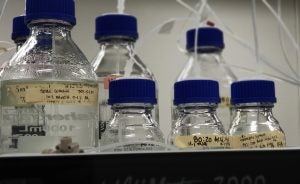Q-Exactive Plus Orbitrap Mass Spectrometer (Thermo Fisher)
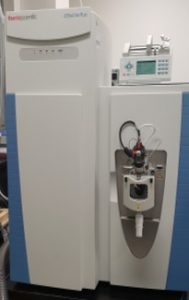
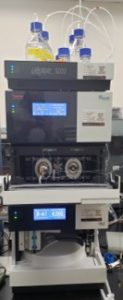
Applications:
- Untargeted proteomics: identification and quantification of thousands of proteins isolated from complex biological matrices. Quantification can be performed using label free, absolute (e.g. SILAC) or multiplexed (e.g. TMT- or isobaric tags) workflows.
- Untargeted phosphoproteomics: identification and quantification of phosphorylated proteins.
- Affinity-purification mass-spectrometry (AP-MS): identification of protein-protein interactions in vivo using a combination of traditional immunoprecipitation/affinity purification and mass spectrometry analysis. Workflows using with and without cross-linking reagents are available.
- De novo protein and peptide sequencing: peptide and protein sequencing of protein/peptide samples purified on SDS-polyacrylamide, native, or blue-native polyacrylamide gels.
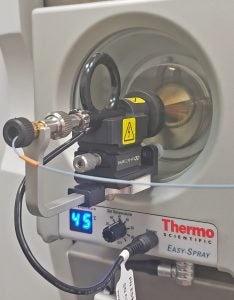
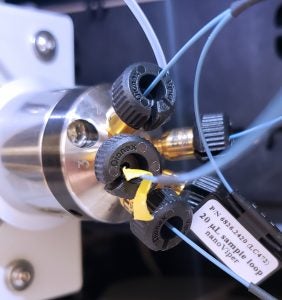
How long does it take?
A typical untargeted proteomics LC-MS/MS run usually takes ~140-160 mins to complete. This ensures ample LC-separation of the thousands of peptides; for less complex samples, we generally use gradients of ~60 min. Data is largely acquired in data-dependent acquisition mode. In between each sample, a clean blank LC-MS/MS run is performed. These shorter (~45-60 min) runs ensure most residual peptides are “cleaned” from the column prior to the next sample injection. However, the LC-MS/MS times provided here are only estimates. Sample quantity and quality, MS methods, and other parameters may increase or decrease these times. Quality control samples, including digested lysate standards and peptide standards to assess for retention time accuracy and drift, are injected throughout samples batch runs as well as at the beginning and end of every to monitor instrument performance. All QC and clean blank data associated with their LC-MS/MS runs are provided to users.
